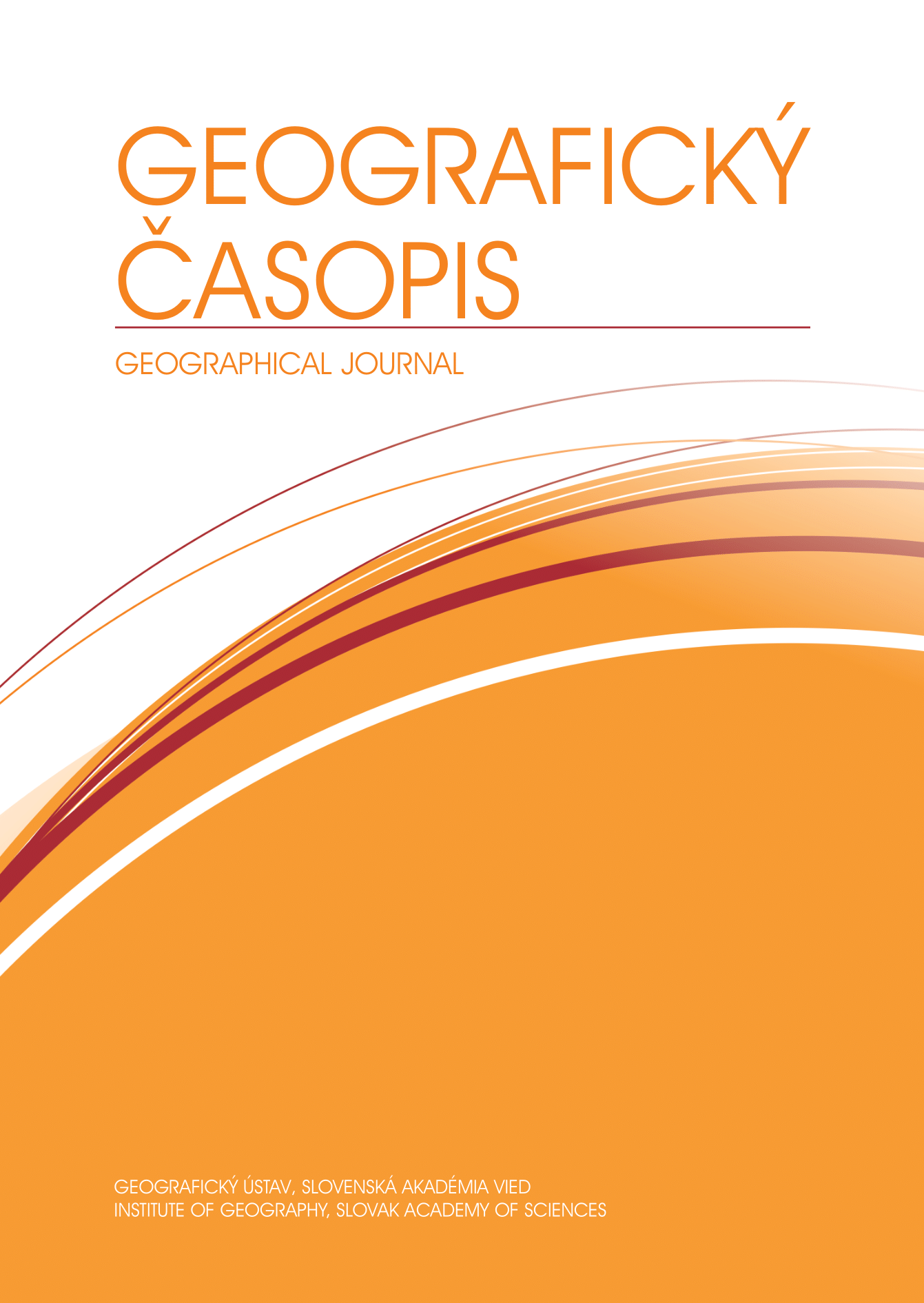A depositional record of temperate woodland expansion during Holocene in the interdune lake infill (Vienna Basin)
DOI:
https://doi.org/10.31577/geogrcas.2024.76.2.06Keywords:
radiocarbon dating, palynological analysis, magnetic susceptibility, loss-on ignition, Vienna Basin, SlovakiaAbstract
Open temperate woodlands were recorded in Central Europe during the Holocene, where Early Holocene lowland pine-forest areas were succeeded by a spread of temperate trees dominated by the oak species. These then prevailed later in the Slovak Northeast Vienna Basin at 4 000 yrs cal BP compared to those on the Danubian Low-land which were dated to 10 390 – 7 500 yrs cal BP. Further changes in the development of vegetation in the region were explored by a multi-proxy approach of radiocarbon dating and palynological, macrofossil, sedimentary, and microprobe chemical analysis. The lithological changes, magnetic susceptibility, and loss-on ignition all suggest a sedimentary hiatus in the peat profile, and results identified that regional vegetation cover during the Late Glacial/Early Holocene comprised an open steppe area with several forest stands. While Pinus taxa dominated during this time, there was also increased temperate woodland species with Quercus at 6 275 – 5 916 yrs cal BP and Corylus, and Fagus in the Middle/Late Holocene. Later record of vegetation development from pollen and macrofossil analysis proves the transition into over-growing mires from ~ 5 000 – 6 000 yrs cal BP. Open temperate woodland species (especially Quercus) were recorded during this time within natural pine forests stabilizing the dunes. Two fire events were noted and first one happened around 5 000 – 6 000 yrs cal BP and the second with a larger amount of microcharcoals with Frangula alnus and Pteridium spores ~1 000 yrs cal BP. The secondary indicators of possible human influence Plantago lanceolata, Rumex acetosa type and Centaurea jacea type, Chenopodiacea, Rumex acetosa type were present throughout the profile but increased only over the last 1 000 yrs cal BP and continued with further presence of Cerealia undiff.
Downloads
Published
Issue
Section
License
Copyright (c) 2024 Geografický časopis / Geographical Journal

This work is licensed under a Creative Commons Attribution-NonCommercial 4.0 International License.
The authors accept and agree to respect the terms and conditions of this public license. Published articles or their parts may be reused, provided that the names of the authors are mentioned and will serve only for non-commercial purposes.

